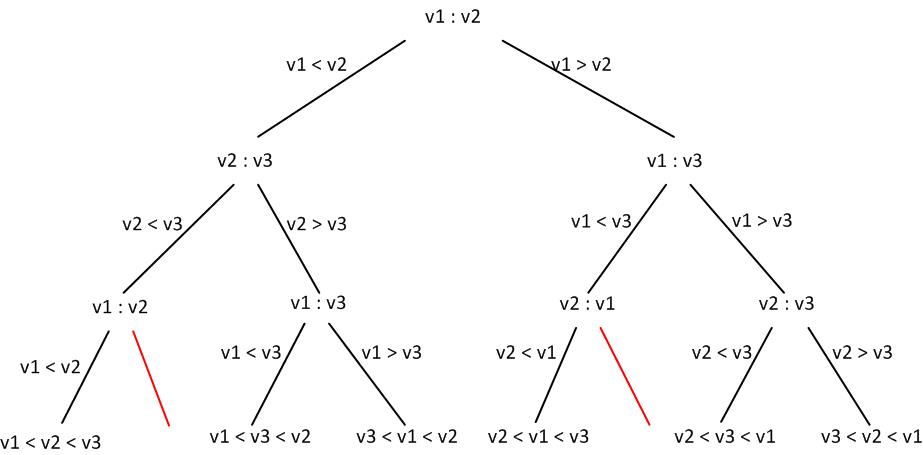For A[0] = v1, A[1] = v1, A[2] = v1, bubble sort will make the comparisons indicated by :.
Bubble sort swaps values if they are out of order. This determines the next comparison.
Assumming no duplicates, there are only 2 possible results of each comparison. So we get a binary tree.
The red edges are never true, so some comparisons are not necessary.
However, we must have 6 leaf nodes corresponding to the 6 possible orderings of {v1, v2, v3}
